In just under two hundred photos that collectively tell the story of Italy from the postwar period to the present, including large cities and country landscapes, with iconic images, others little known and some completely unpublished, Gianni Berengo Gardin. The Eye as a Craft, at MAXXI Museo nazionale delle arti del XXI secolo in Rome from May 4 to September 18, 2022, is perhaps the most successful retrospective dedicated to the renowned photographer. It was a difficult challenge that curators Margherita Guccione and Alessandra Mauro took on, with MAXXI’s production in collaboration with Contrasto, because what more could be told about a prolific photographer like Gianni Berengo Gardin (Santa Margherita Ligure, 1930) who has published some 250 books, taken more than a million shots bearing witness to sixty years of Italy’s history with his photos?
In the area of the museum redeveloped from an old barracks, along the staircase leading to the Maxxi Extra Room, details of some of Gianni Berengo Gardin’s photos emerge from the white walls, the cheerfulness of children playing, a couple dancing and guiding the viewer to the exhibition. It is the illustrator Martina Vanda who has selected and reinterpreted Berengo Gardin’s images, bringing them back over the entire height of the wall, thus forcing us, as soon as we enter, to look up until we recline our heads to see the pigeons in flight at St. Mark’s Square and feel that we are at the center of one of Gianni Berengo Gardin’s most famous photos. With his black paint on a white background, Martina Vanda took the photographer’s choice to never switch to color to the extreme: “because I think that color distracts the person reading the photograph,” he said in an interview, “in that the observer is attracted by the colors, but then does not see the real content of the photograph.” It is this rigor that has accompanied him through 60 years of photographic craft. The craft that gives the exhibition its title and echoes that of a book of his photos edited by Cesare Colombo in 1970. It was the time when photography as a documentation of reality was affirmed, when the photographer, far from being an artist, was a witness of his time and put his eye and his work at the service of a collective analysis of history.
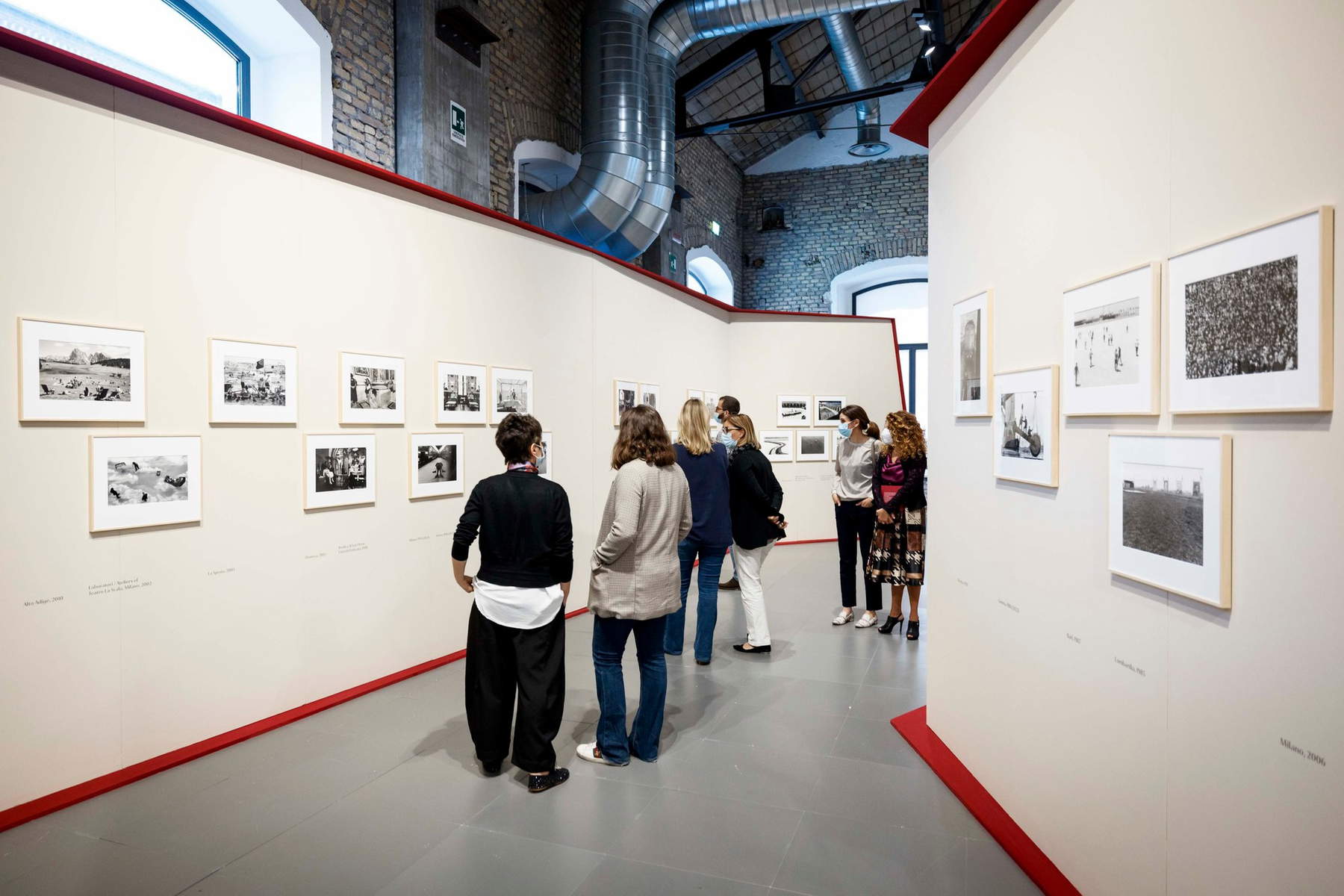

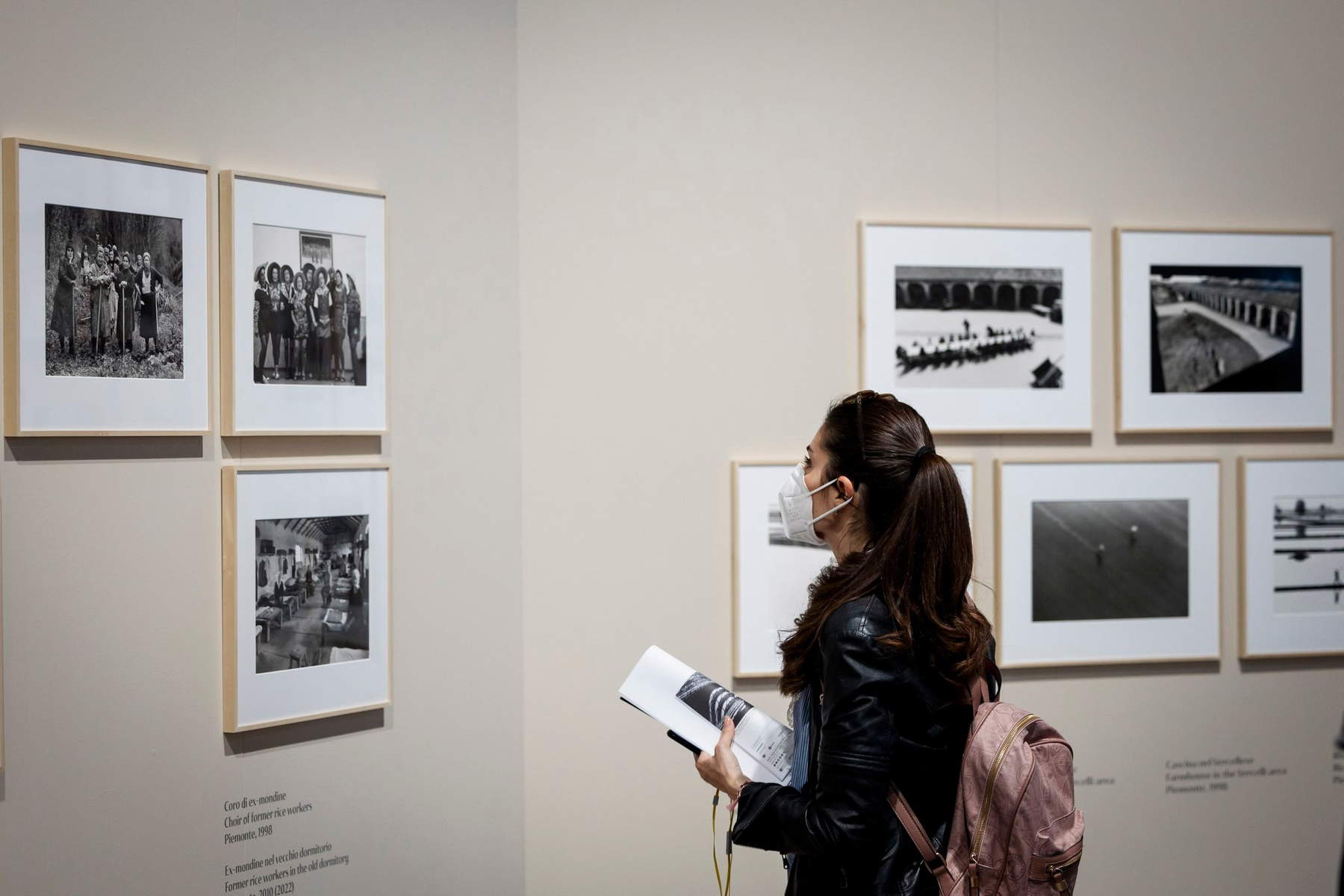


The exhibition begins with some of the most recognizable photos, such as the one of the couple kissing under the arcades of St. Mark’s Square from 1959. We are in Venice, the city of origin of the Berengo Gardin family, where he discovered photography in the 1950s, when he was writing for some newspapers and needed images to illustrate his articles, and where he has returned several times to tell about places and people. That is why there is a bit of Venice all along the path of the exhibition, the most famous one of the Bridge of Sighs (1960) and of the high water in St. Mark’s Square (1960), but there is the Serenissima also in the decorated room of a café (1964), the one that is barely recognizable in the narrow street with the illuminations and the carousers (1969), in the walk of a couple (1963), in the passenger room of a vaporetto (1958).
Thus, one photo after another, the exhibition unfolds in a continuous narrative sequence, without emphasizing the distinction between epochs, places and, in general, the reportages for which the photos were taken. And so we are first in Rome (1958), then in Friuli (1970) and Puglia (1966), documenting rural life, the daily effort to build a future, to survive the present. They then cross almost all Italian regions and cities, from Sicily to the rice fields of Vercelli, to the Olivetti factory in Ivrea, whose work and lives of the workers Gianni Berengo Gardin documented for decades.
If the years did not mark the time of the photos, we would read it as one big project dedicated to people. They are the protagonists of each shot, whether they are posed portraits, caught in a moment of everyday life, or the glance of a passerby who absent-mindedly crosses the lens. That casual glance of the priest who breaks away from the group and looks toward us (1958) or the sly smile of Ermanno Olmi (2006) as he works, are that decisive instant that Henri Cartier-Bresson spoke of as the very essence of photography. And this is also why Gianni Berengo Gardin has often been compared to this undisputed master of all twentieth-century photography. And so, as we cross one face after another, we are confronted with the lost and suffering gazes of asylum guests, who seem to beg for mercy in a language of the eyes that only the camera can capture. A message that Gianni Berengo Gardin was able to translate in his extraordinary 1968 reportage Morire di classe (Dying in Class ), photographing Italian asylums and publicizing the prison treatment that at the time was the normal criterion for managing psychiatric patients. It was a reportage that made a lot of noise and contributed in a fundamental way to the passing of the Basaglia law, which finally decreed the closure of asylums in 1978. While Morire di classe is perhaps the harshest of his works, in the curators’ choice it is extremely blurry in the passage that distinguishes it from the roundup of faces of ordinary people and then up to the most famous portraits, from the famous screenwriter Cesare Zavattini on a bicycle in his Luzzara (1973), to Peggy Guggenheim raising her ironic gaze behind Calder’s installation in her collection (1966).
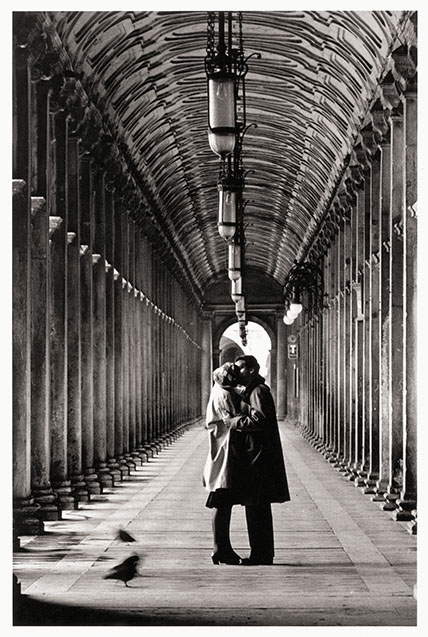
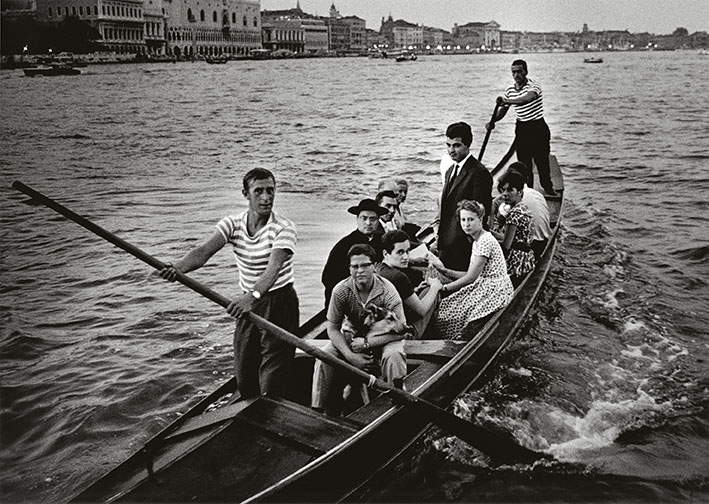
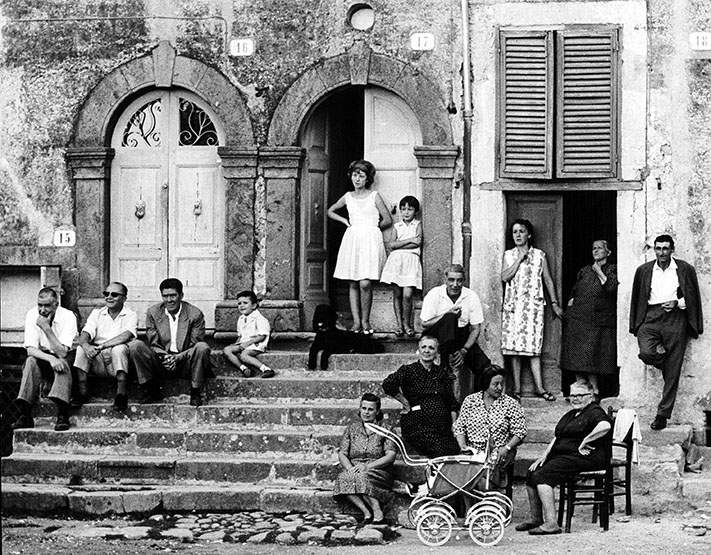


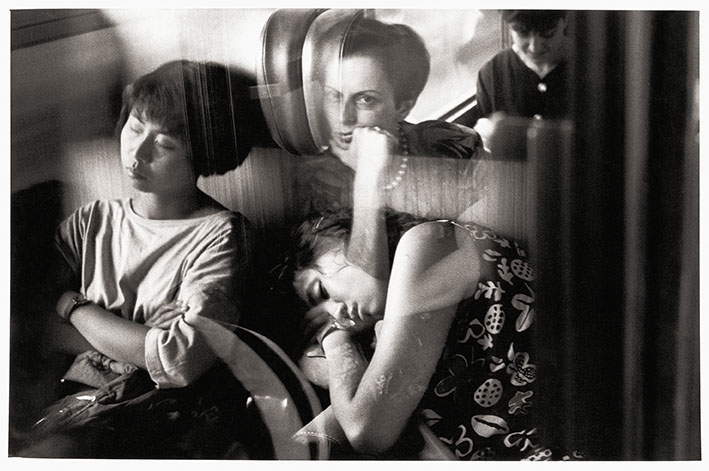
It is a journey of emotions that one experiences in this exhibition, as if the reflections that each project provoked were left to the past, to the role they played. And instead, continuity emerges in the way of looking at reality, capable of creating references that go beyond the specific time. Here the characters of history, those who were protagonists in the stories of the factories, or of the great emigration to the north, have become pieces of a larger story, where at the center of each tale is only humanity, with its frailties and its hopes, the cheerfulness that makes its way through the pain, the fatigue, the disillusionment and the life that nevertheless, goes on.
There is no photo in this selection (and perhaps there is not in the entire archive of his shots) that is “the photo” of Gianni Berengo Gardin, the one that alone can tell the whole story of his experience and his complex journey. It is the humanity that Gianni Berengo Gardin has always explored in his work, in its social and collective dimensions. It is evident from the photos his approach to people, infinitely curious, but discreet and respectful. In no photo is private space violated, not even in those captured of passers-by, who with a barely hinted smile seem to give permission to the photograph. It is from the succession of these shots, like dots coming together in a puzzle game, that Gianni Berengo Gardin’s choices of language emerge. His gaze is never sided, never overtly political, of that politics referred to the dialectic between parties, but it is political in the way he reflects on society, on people, on the great changes in history, which he has helped to construct and orient with his reportage. His approach is always strictly adhering to a conception of photography as a documentary representation of reality, but the character of the photographer is always present in those ironic details, and in the unsettling point of view. He is able to create a restrained reflection, which does not come immediately look at the photo, but matures in the head. So like the couple riding away on a Vespa under the words “we are against the comfortable life,” or “Work Break, Milan, 1987” where we still wonder what the woman lying on the ground behind a small table does for a living.



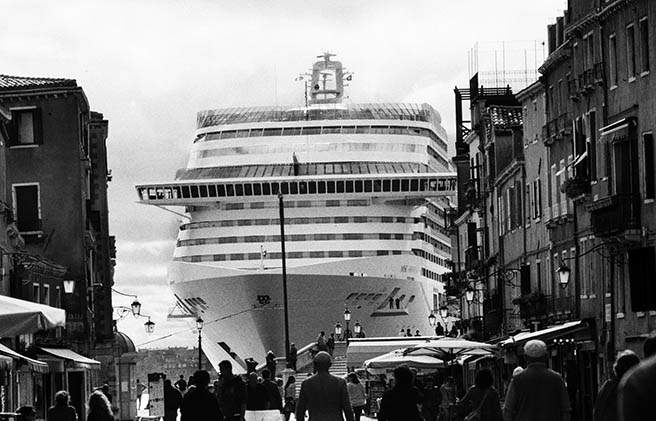
At the end of the exhibition, we realize that what we have passed through is a path of bends reminiscent of the Grand Canal in Venice, and there we are taken back with the photos of the famous reportage on the Great Ships. These are photos that Gianni Berengo Gardin took between 2012 and 2014 and they bear direct, rigorous testimony that without any photographic artifice know how to convey in a disruptive way the threat of the passage of large cruise ships in the Giudecca Canal. The people, the palaces, the squares that we are used to seeing immense in Berengo Gardin’s photos, become tiny in the presence of these monsters that, also thanks to the attention raised by these photos, from 2021 can no longer transit Venice thanks to an ad hoc decree.
At the end of the path is a large photographic installation, a panel that represents Gianni Berengo Gardin’s studio in 360 degrees, there where his ideas are born and where his archive is kept. It is here that we find the thread of the whole story of this exhibition, and we realize that each of the photos we have seen has stepped out of its original role: the one that belonged to a reportage commissioned by Olivetti, alongside the one taken on the street of a passerby or the portrait of a friend.
At this point it is worth listening to the story made by the photographer’s own voice that can be heard from the web thanks to a QR code. And it is with this that, with a head full of his photos just seen, what emerges in the mind is him, Gianni, no longer a photographer but a man, with his discreet and rigorous character, his subtle and never unseemly irony, the curiosity that does not invade but appears on the threshold of the lives of others and tells us about them. He who has always been behind the scenes and with this exhibition reminds us how revolutionary the message of a photo can be, if what drives the photographer is pure curiosity, the desire to witness, the attention to others. That is perhaps what makes this exhibition so successful. And when at the end of the journey we stop to think that we could have taken that picture too, with a good camera, with the latest technology. Maybe so, but not with the same intensity, with the same project in mind, with the same force capable of changing the world. And if Gianni Berengo Gardin said he is not an artist, at the end of the journey we ask ourselves: will this be art?
Warning: the translation into English of the original Italian article was created using automatic tools. We undertake to review all articles, but we do not guarantee the total absence of inaccuracies in the translation due to the program. You can find the original by clicking on the ITA button. If you find any mistake,please contact us.